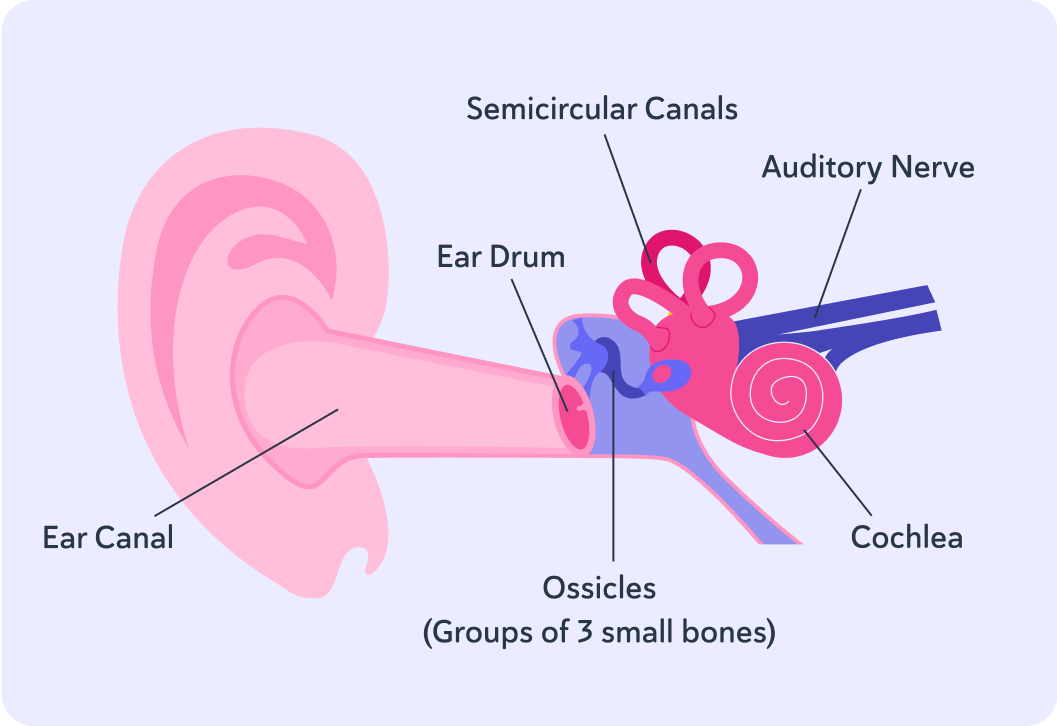YOU ARE LEARNING:
Human Hearing

Human Hearing
Sound waves cause vibrations in the human ear, which are transferred into electrical signals that can be interpreted by the brain. This allows us to hear.
This lesson looks at how sound waves travel through materials, and how this allows us to hear things.
Sound waves are mechanical waves. What does that mean?

Sound waves are longitudinal waves. How do we describe longitudinal waves?

The more densely packed the particles of a medium are, the __________ sound will travel through it.

In which medium do you think sound waves travel the fastest?

Sound requires particles to vibrate, so they travel fastest in a solid.
In solids, particles are closer together so it's easier to transfer energy between them. Sound travels slowest in a gas, because they need bigger oscillations (more energy) to make particles vibrate. They cannot travel at all in a vacuum at all.

Waves change speed when they travel between two media of different densities. What do we call that phenomenon?

Which feature of waves does not change when undergoing refraction?

What does the frequency tell us about the pitch of a sound wave?

Can you remember what the audible range of sound frequencies for human hearing is?

Sound waves travel along our ear canal and hit our eardrum, causing it to vibrate.
These vibrations are transmitted along the ossicles, through the semicircular canals and into the cochlea.

The cochlea has lots of tiny hairs which resonate with certain frequencies.
This is why humans can only hear a specific range of frequencies.

These tiny hairs convert the sound into electrical signals.
These signals are sent along the auditory nerve all the way to the brain. The brain then interprets the signals as sounds.

As we get older, parts of the ear can get damaged. This explains why older people can hear a smaller range of frequencies.
So you should protect your ears from very loud noises and you should make sure not to insert anything small into your ears to prevent some of the wear and tear that impairs hearing.

The main source of damage to our ears is high volume sounds. What feature of a wave determines its volume?

